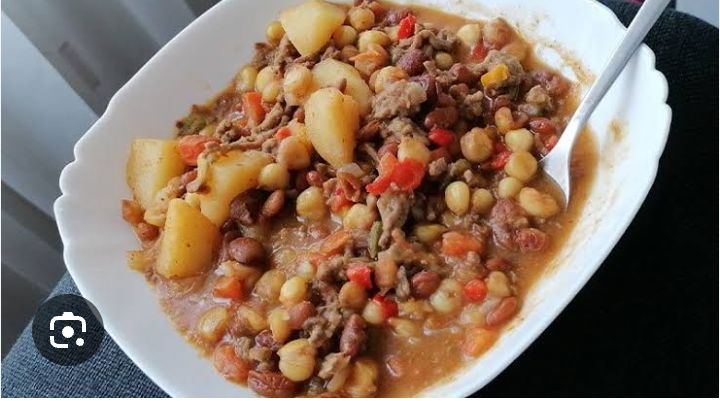Introduction.
Kenya’s culinary landscape is as rich and diverse as its geography and culture. Situated along the eastern coast of Africa, Kenya is home to more than 40 ethnic groups, each with its own language, customs, and traditional foods. From the highlands of Central Kenya to the Indian Ocean coastline, and from the Maasai Mara plains to the shores of Lake Victoria, Kenyan cuisine reflects a blend of indigenous ingredients, cultural traditions, and foreign influences shaped over centuries.—Cultural and Historical InfluencesKenyan food is deeply rooted in history and cultural exchange. Indigenous communities such as the Kikuyu, Luhya, Luo, Kalenjin, and Maasai have cultivated traditional recipes using local crops and livestock for generations. Staples like maize, millet, sorghum, and cassava formed the foundation of many meals. With the arrival of Arabs along the coast during the first millennium and later the Portuguese, Indians, and British colonists, the culinary scene expanded significantly.

The Swahili culture on the coast bears the strongest foreign imprint, especially from Arab and Indian traders who introduced rice, spices, and coconut. Inland, British colonialism introduced tea and white bread, now common in daily Kenyan diets. The integration of these influences with traditional methods has resulted in a food culture that is both unique and multifaceted.
Key Dishes Across Kenya.
1. Ugali Ugali is Kenya’s most iconic staple dish, made by cooking maize flour in boiling water until it forms a stiff, dough-like consistency. It is commonly served with sukumawiki (collard greens), nyama choma (roasted meat), or fish, and is eaten with the hands.
2. Nyama Choma Literally meaning “roasted meat,” nyama choma is Kenya’s beloved barbecue, often made with goat or beef. Cooked over open flames and seasoned simply with salt, it is a communal dish often enjoyed with beer and sides like kachumbari—a fresh tomato and onion salsa.

3. Githeri Githeri is a traditional Kikuyu dish made of boiled maize and beans. It is a nutritious and filling one-pot meal, often seasoned with onions, tomatoes, and sometimes potatoes or greens.
4. Pilau and Biryani Along the coastal region, dishes like pilau and biryani stand out due to their aromatic spice blends. Pilau is a spiced rice dish cooked with meat and fragrant seasonings like cloves, cardamom, and cinnamon. Biryani, more elaborate, includes layers of rice and curried meat, often cooked with saffron and served during special occasions.
5. Mukimo This Kikuyu delicacy blends mashed potatoes with greens (like pumpkin leaves or spinach), maize, and beans. It’s often served alongside meat stews and is a staple at celebrations and gatherings.
6. Samosas and Chapati Influenced by Indian cuisine, samosas (triangular fried pastries with meat or vegetable fillings) and chapati (unleavened flatbread) are common street foods and side dishes throughout the country.

7. Tilapia Western Kenya, near Lake Victoria, is known for its fresh tilapia, usually fried whole or stewed in tomato-based sauces and served with ugali or rice.8. Mandazi and Mahamri Mandazi (sweet fried dough) and its coastal variation, mahamri (made with coconut milk and cardamom), are popular snacks or breakfast items, often enjoyed with chai (spiced tea).—Regional Variations and IngredientsKenya’s diverse geography significantly shapes its culinary regions:Central Kenya emphasizes root vegetables and cereals. Dishes are simple but hearty, with a focus on githeri, irio (mashed peas and potatoes), and leafy greens.Western Kenya has a strong affinity for fish and fermented foods like sour milk (mursik) and traditional vegetables.The Rift Valley, home to the Maasai, includes meat-heavy diets, with a preference for milk and blood as ceremonial delicaciesThe Coast features seafood, rice dishes, and liberal use of spices, coconut, and tropical fruits. This region’s Swahili cuisine is a fusion of African, Arab, and Indian influences.Northern Kenya, inhabited by pastoral communities like the Samburu and Turkana, relies heavily on camel meat and milk, millet, and sorghum due to the arid climate.Modern Trends and Global Influence Urbanization and globalization have reshaped Kenyan eating habits, especially in cities like Nairobi and Mombasa. Fast food chains, fusion restaurants, and supermarkets with international ingredients are increasingly common.
However, there is also a strong movement toward preserving and modernizing traditional Kenyan food. Kenyan chefs are showcasing local ingredients through gourmet reinterpretations, and the rise of food blogs and TV shows has reignited interest in homegrown cuisine.Moreover, Kenya’s diaspora continues to introduce Kenyan food to global audiences. Dishes like ugali and nyama choma are finding a place on menus in African restaurants abroad, while Kenyan coffee and tea remain significant exports.
Conclusion.
Kenyan food is more than sustenance—it is an expression of community, culture, and identity. Whether eaten in a rural homestead, a coastal street stall, or a modern Nairobi restaurant, each dish tells a story of the people and places that shaped it. As Kenya continues to evolve, so too does its cuisine, balancing deep-rooted tradition with fresh innovation. For anyone seeking to understand Kenya, tasting its food is an essential first step.




